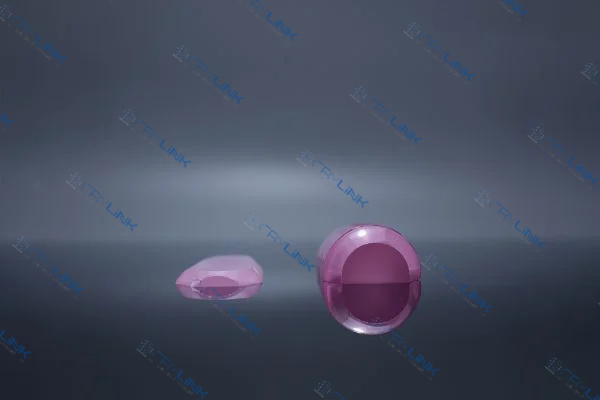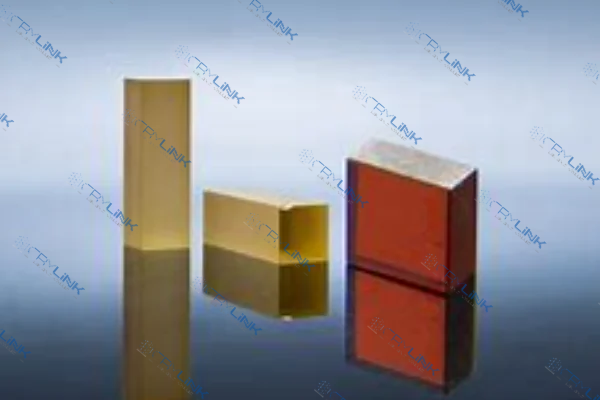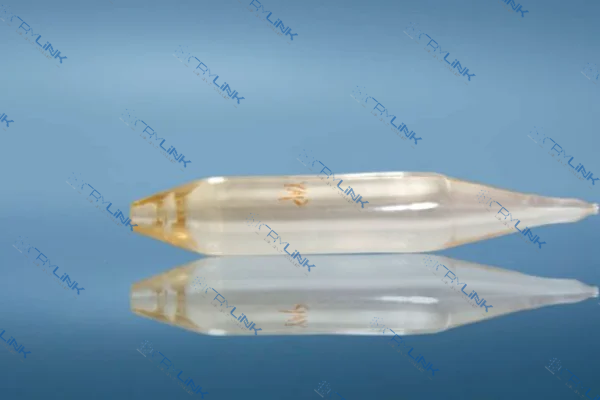Introduction to Infrared Laser Crystals
In the rapidly advancing world of photonics, infrared laser crystals such as Er:YAG, Cr:ZnSe, and Tm:YAG have emerged as pivotal elements. We’ll delve into their unique properties, efficiencies, and application in a variety of fields.
Erbium-Doped Yttrium Aluminum Garnet (Er:YAG) Crystals
Er:YAG crystals reveals an intriguing panorama of their widespread utility. As we mentioned earlier, these crystals emit at a wavelength of 2.94 µm, corresponding to the vibrational absorption peak of water. This unique attribute imparts a natural affinity for Er:YAG lasers with human tissues, a majority of which comprise water. This affinity is a significant factor behind the extensive deployment of Er:YAG crystals in medical applications.
Er:YAG lasers, owing to their unique wavelength, ensure minimal thermal damage. They do this by enabling a precise ablation process, wherein the target tissue is vaporized layer by layer, leading to an ultra-fine cut and a much smoother post-procedure healing. This high precision, coupled with the ability to induce minimal collateral thermal injury, is especially crucial in aesthetic and medical dermatology, where treatment needs to be both effective and cosmetically appealing.
In ophthalmology, Er:YAG lasers have been harnessed to perform intricate procedures. They can aid in removing opacities from the back of the lens capsule following cataract surgery or creating openings in the peripheral iris to alleviate high intraocular pressure. The delicacy and precision offered by Er:YAG lasers are invaluable in such sensitive and critical procedures.
Beyond the medical realm, Er:YAG crystals have carved their niche in the military sector. The wavelength of 2.94 µm falls within the transmission window of the Earth’s atmosphere, facilitating its use in free-space communication systems. It’s worth noting that these systems play a pivotal role in modern warfare, facilitating real-time information sharing across various units operating in different locations. The atmospheric transmission capability of Er:YAG also opens avenues for their use in remote sensing, a critical tool in military surveillance and reconnaissance missions.

In the domain of scientific research, Er:YAG continues to find novel applications. For instance, in spectroscopy, they aid in the study of various substances by generating a specific wavelength of light to interact with the sample material. The result is a unique spectrum or “fingerprint,” revealing a treasure trove of information about the sample’s physical and chemical properties. Such insights are integral to many research fields, from materials science to environmental science, and from forensic analysis to pharmaceutical development.
In conclusion, the diverse applications of Er:YAG crystals, spanning medical, military, and scientific domains, are a testament to their unique properties and versatility. They represent a fascinating intersection of physics, engineering, and practical application, encapsulating the power and potential of infrared laser technology. As the understanding and manipulation of light continue to progress, it’s safe to expect that Er:YAG crystals will continue to play a crucial role in this vibrant narrative of scientific advancement.

Chromium-Doped Zinc Selenide (Cr:ZnSe) Crystals
The versatility of Cr:ZnSe crystals, with their broad emission wavelength range of 2-3 µm, ushers in an array of possibilities across different sectors. This wide range ensures that Cr:ZnSe crystals are uniquely compatible with mid-infrared lasers, which are often preferred for their capacity to penetrate deeper into tissues, provide excellent resolution, and be tuned to specific absorption bands of different materials.
The power of Cr:ZnSe crystals comes to the fore in medical applications. Thermal imaging, a non-invasive diagnostic tool, has been revolutionized with the use of these crystals. The robust imaging capabilities of Cr:ZnSe allow for precise detection and analysis of temperature variations on the skin surface. These changes can provide valuable insights into the underlying circulatory, muscular, skeletal, or nervous system disorders, significantly enhancing the diagnostic accuracy. Beyond diagnostics, Cr:ZnSe crystals also make a significant contribution to therapeutic procedures, especially those involving photothermal therapies. The crystals’ ability to absorb and convert light into heat efficiently can be harnessed to destroy harmful cells such as cancerous growths selectively, offering a promising, non-invasive treatment modality.
In the realm of defense and military applications, Cr:ZnSe crystals have marked a substantial impact. These crystals’ ability to effectively detect thermal emissions proves invaluable in developing heat-seeking technologies. Such technologies are integral to many missile guidance systems, where the infrared light emitted by a target’s heat is used to track and follow the target. As such, Cr:ZnSe crystals provide a key building block in modern defense technology, facilitating the development of more accurate, reliable, and effective weaponry and surveillance systems.
From a scientific perspective, Cr:ZnSe crystals hold significant potential. With their broader wavelength range, they become powerful tools in molecular spectroscopy. This broad tuning range allows for the analysis of various substances and their interactions with infrared light. Such analyses can provide researchers with a deeper understanding of a substance’s molecular structure and chemical composition, paving the way for new discoveries and innovations across various scientific fields. For example, in environmental science, Cr:ZnSe-based spectroscopy can aid in the detection and analysis of greenhouse gases, contributing significantly to climate research.
Ultimately, the potential of Cr:ZnSe crystals lies in their unique properties and adaptability. Whether it’s enhancing diagnostic precision in medicine, shaping modern defense technology, or fuelling scientific research, the scope of Cr:ZnSe crystals is indeed extensive. With continued research and advancements, the influence and application of these crystals in the realms of medicine, defense, and science are poised to expand even further.

Thulium-Doped Yttrium Aluminum Garnet (Tm:YAG) Crystals
The unique capabilities of Tm:YAG crystals, including their emission wavelength of 2.01 µm, high slope efficiency, and resistance to optical damage, make them ideal for a wide array of applications. This wavelength places them in the eye-safe region of the spectrum, an essential feature for any device intended for close interaction with biological tissues.
In the realm of medical applications, Tm:YAG crystals have paved the way for surgical innovations. These crystals allow for the production of lasers that can ablate tissues with extreme precision, making them especially useful in procedures where the surgical margin is critical, such as neurosurgery and otorhinolaryngology. The wavelength also facilitates deep penetration with minimal scattering, enabling treatments of subsurface tissues without damaging overlying structures. Moreover, the lasers based on Tm:YAG crystals cause less thermal injury compared to other wavelengths, minimizing the risk of collateral damage and aiding quicker recovery.

The military sector also benefits significantly from the capabilities of Tm:YAG crystals. Their eye-safe emissions ensure that operators are not exposed to harmful levels of radiation, thereby promoting operational safety. Additionally, the crystals’ resistance to optical damage ensures they can withstand the harsh conditions often associated with military applications. Tm:YAG crystals are also employed in range-finding and target designation systems due to their exceptional beam quality and eye-safe wavelength.
In scientific research, Tm:YAG crystals serve as powerful tools due to their unique emission wavelength and high slope efficiency. They can be effectively used in frequency doubling and parametric processes, techniques that manipulate the frequency of light to investigate various physical phenomena. These processes are vital in fields such as quantum physics and photonics research, where the interaction of light with matter is often explored.
Furthermore, the reliable performance of Tm:YAG crystals in high-power and high-repetition-rate systems has paved the way for their use in materials processing and microfabrication, where they help achieve fine details and high production rates. This has led to advancements in the production of microelectronic devices and precision components.
In summary, Tm:YAG crystals, with their unique properties, have made significant contributions across medical, military, and scientific fields. As technology continues to advance and the need for more precise and efficient tools grows, these crystals will undoubtedly remain at the forefront of infrared laser technology. They encapsulate a combination of safety, efficiency, and versatility that is hard to match, ensuring their continued relevance and application in the future.

Comparative Evaluation: Er:YAG vs Cr:ZnSe vs Tm:YAG
Er:YAG, Cr:ZnSe, and Tm:YAG, each exhibit their unique merits. Er:YAG crystals excel in precision, Cr:ZnSe in tunability and range, while Tm:YAG champions in safety and durability.
Implications and Future of Infrared Laser Crystals
Infrared laser crystals, namely Er:YAG, Cr:ZnSe, and Tm:YAG, are propelling the frontier of laser applications. With continuous advancements, they promise an exciting future for medical, military, and scientific fields.
Conclusion
By comparing Er:YAG, Cr:ZnSe, and Tm:YAG, we realize that each of these infrared laser crystals have distinct qualities that make them invaluable to their respective domains. With further research, the utilization of these crystals is expected to revolutionize numerous applications.
Frequently Asked Questions (FAQs)
- Q1: What sets Er:YAG crystals apart in terms of emission wavelength and energy level?
- A1: Er:YAG crystals emit at a wavelength of 2.94 µm, coinciding with a vibrational absorption peak of water. Coupled with high quantum efficiency, they excel in precision and efficiency.
- Q2: Why is Cr:ZnSe considered versatile?
- A2: The versatility of Cr:ZnSe crystals stems from their broad emission wavelength range of 2-3 µm. This wide range makes them suitable for a variety of applications, from thermal imaging to molecular spectroscopy.
- Q3: How does the emission wavelength of Tm:YAG crystals enhance safety?
- A3: Tm:YAG crystals emit at 2.01 µm, which falls within the eye-safe region of the spectrum. This characteristic, coupled with their high slope efficiency and damage resistance, ensures safety in various applications.
- Q4: How are these infrared laser crystals used in military applications?
- A4: In the military realm, these crystals find various applications. Er:YAG’s atmospheric transmission properties aid in remote sensing, while Cr:ZnSe’s ability to detect thermal emissions is useful in heat-seeking technologies. Tm:YAG’s eye-safe emissions enhance operational safety.
- Q5: What distinguishes Er:YAG, Cr:ZnSe, and Tm:YAG from each other?
- A5: The primary distinction lies in their emission wavelengths and consequent efficiencies. Er:YAG is efficient and precise, Cr:ZnSe is versatile due to its broad tuning range, while Tm:YAG stands out for its safety and reliability.

Frank
Frank graduated from the University of Shanghai for Science and Technology, majoring in optics. As a technical engineer at Crylink Company, he deeply understands crystal materials and laser components.
Related Video(s) with this Article
Related Product(s) with this Article
Related Application(s) with this Article
